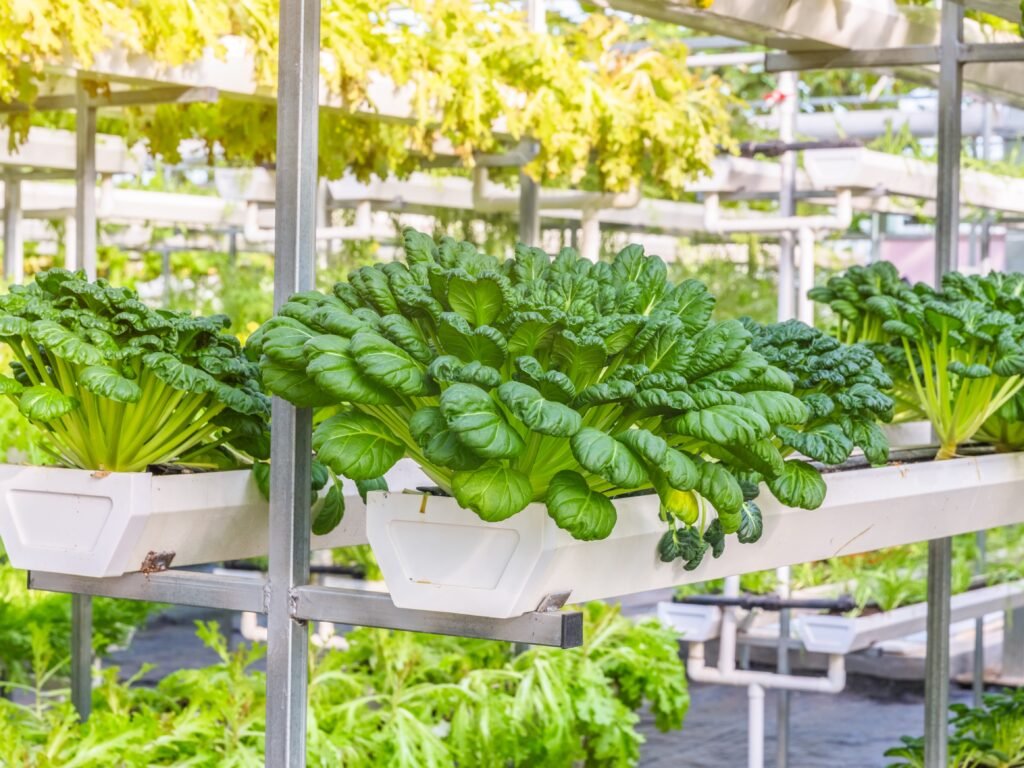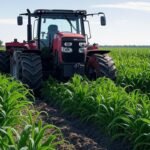With the global population increasing, the demand for food is rising, while the limitation of land and natural resources poses a significant challenge. In addressing this crisis, vertical farming offers a sustainable and innovative solution.
What is Vertical Farming?
Vertical farming is an agricultural technology where crops are grown inside buildings or specially constructed vertical layers. This method ensures the use of smart technology, artificial lighting, and precise water management, helping to produce more in less space.
Key Features:
• Hydroponics: Soil-Free Farming. Hydroponics is a method of growing plants without soil, where the roots are submerged in a nutrient-rich water solution. This technique provides plants with the essential nutrients directly, without needing soil for support or nutrition. Hydroponics is ideal for urban farming, indoor farms, and regions with poor soil quality or water scarcity.
• Aeroponics: Growing in the Air. Aeroponics is another form of soil-free farming, where plants are grown with their roots suspended in the air and sprayed with a nutrient-rich mist. This technique allows for greater oxygen availability to the roots, which can promote faster growth and healthier plants. Aeroponics is often used for high-value crops like lettuce, herbs, and microgreens and is particularly beneficial for space-constrained or high-tech urban environments.
• LED Lighting: Optimizing Growth with Light. LED (Light Emitting Diode) lighting is one of the key technologies used in modern farming, particularly for indoor and vertical farms. Plants rely on light for photosynthesis, and LED lights can be tuned to emit specific wavelengths of light that optimize growth at various stages of development. LED lighting systems are often combined with hydroponic and aeroponic setups to optimize growth conditions in indoor farms, where natural sunlight is insufficient.
• IoT and Sensor Technology: Smart Farming Solutions. The integration of the Internet of Things (IoT) and sensor technology into farming has revolutionized the way farmers monitor and manage crops. Sensors can track various environmental factors such as temperature, humidity, light intensity, providing real-time data that can help optimize growing conditions. Through the integration of IoT and sensor technology, farmers can monitor and control every aspect of the growing environment, improving crop yields and sustainability.
Benefits of Vertical Farming:
- Efficient use of land: Vertical farming allows for crop production in small urban spaces.
- Water conservation: Uses 70-95% less water compared to traditional farming methods.
- Environmentally friendly: Reduces the use of chemical fertilizers and pesticides.
- Year-round crop production: Controlled environments allow for farming in all seasons.
- Reduced carbon emissions: Lower need for food transportation reduces environmental harm.
Successful Global Examples:
- AeroFarms, USA
One of the world’s largest vertical farms, leading in water conservation and environmentally friendly crop production. - OST Vertical Farming, Singapore
This method has gained popularity for ensuring urban food security. - Plantagon, Sweden
Established a special tower farm for environmentally friendly food production, serving as an example of sustainable agriculture.
Impact of Vertical Farming in 2024:
• Increased food security: Vertical farming is becoming a reliable means of urban food supply.
• Mitigating climate change effects: By reducing water waste and increasing productivity, it positively impacts the environment.
• Flow of investment: In 2024, global investment in this sector has significantly increased, with large-scale farming projects launched in Asia and Europe.
Vertical farming is opening new horizons for the future of agriculture. It is not just an effective solution for food production but also crucial from an environmental and social perspective. Through the use of innovative technologies, it has established itself as a model for sustainable agriculture.


I need to establish , such production in Namibia
Pingback: Vertical Farming Startup Cost in 2025: Investment & ROI Guide - Agro Reality